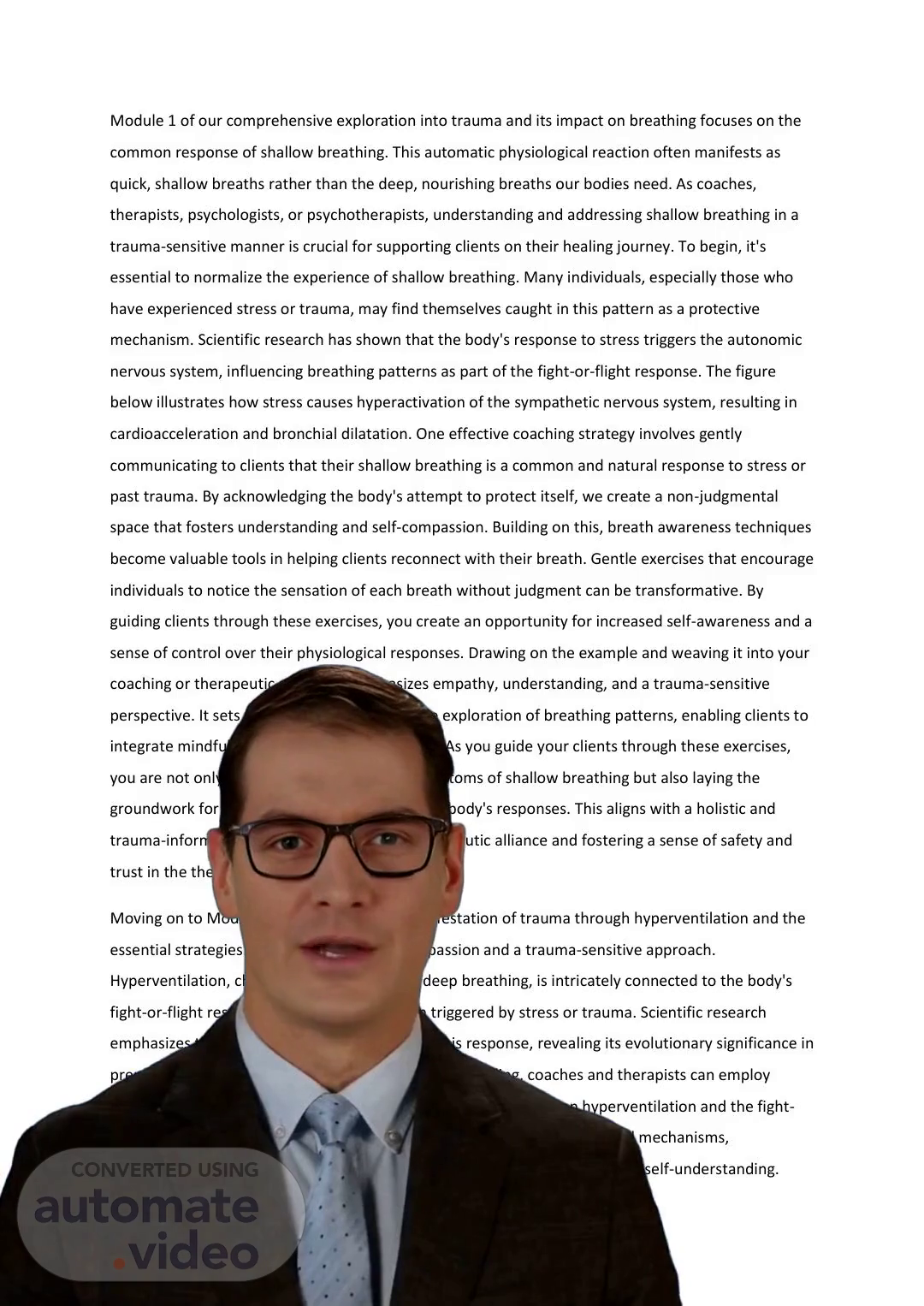Scene 1 (0s)
[Virtual Presenter] As health professionals, it is essential to understand the connection between shallow breathing and trauma in order to provide support and guidance to our clients on their healing journey. Shallow breathing is an involuntary bodily response to trauma which is often instinctive and fast, rather than the deep, revitalizing breaths that the body needs. Normalizing this experience is important to create a safe, non-judgmental environment and foster understanding and self-compassion. Breath awareness techniques can be employed to reconnect with the breath and provide an opportunity for increased self-awareness and a sense of control. Guiding clients through these exercises can empower them to begin their own healing process..
Scene 2 (45s)
[Audio] Shallow breathing is often a response of the body to trauma, which is part of the fight-or-flight response. Breath awareness and mindful breathing exercises can aid an individual in better understanding their breath and in gaining a stronger sense of control of their body and mind. Moreover, therapeutic practitioners can introduce Progressive Muscle Relaxation (PMR) techniques and demonstrate to clients how physical activity and stretching can help to loosen any tightness in the respiratory muscles. Module 1.3 will tackle the physical effects of trauma and use different strategies to help clients reach a relaxed and calm state..
